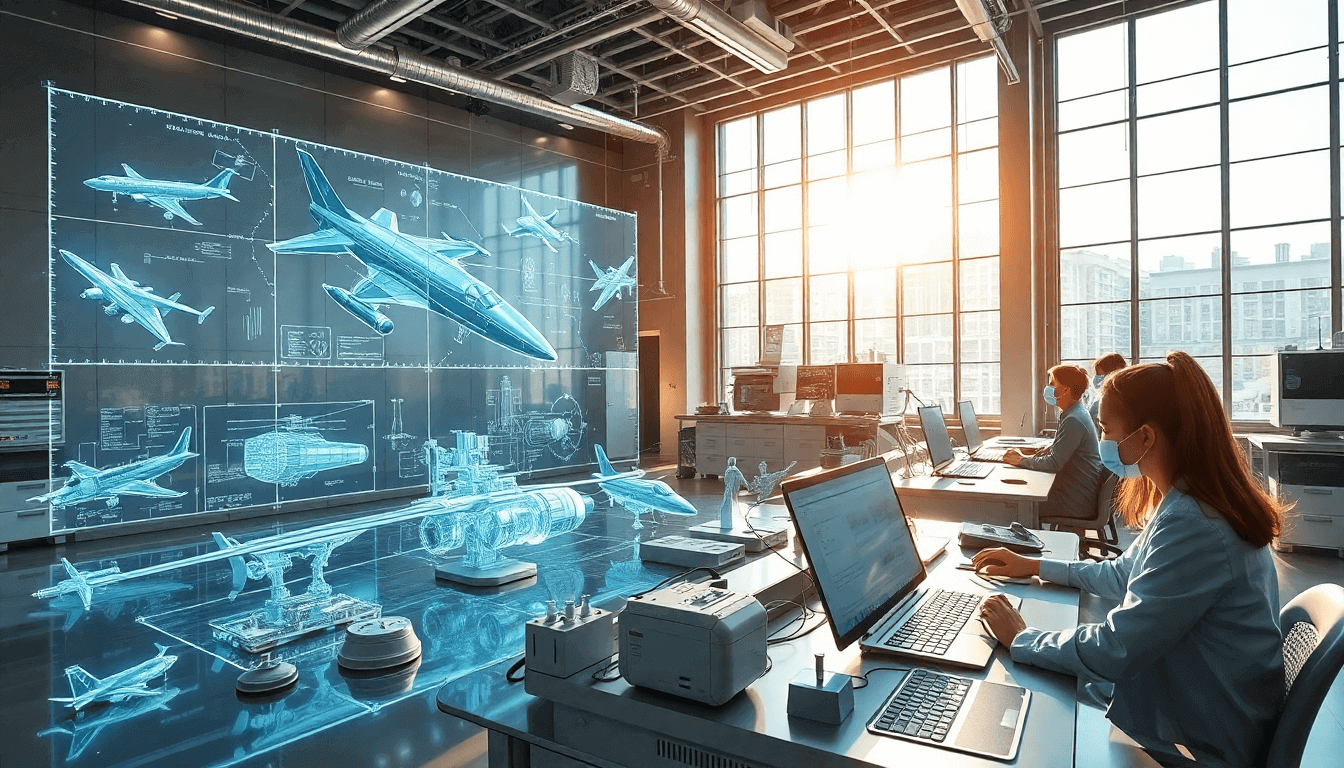In the ever-evolving world of technology, one field stands out as a beacon of innovation and exploration: aerospace engineering. This dynamic discipline combines the principles of physics, mathematics, and cutting-edge design to push the boundaries of what's possible in the skies and beyond. Whether you're a seasoned aviation enthusiast or simply curious about the wonders of flight, this blog post will take you on a captivating journey through the fascinating realm of aerospace engineering.

The Foundations of Aerospace Engineering
At the heart of aerospace engineering lies a deep understanding of the fundamental principles that govern the behavior of aircraft, spacecraft, and their associated systems. From the intricate calculations of aerodynamics to the complex mechanics of propulsion, every aspect of this field is meticulously studied and refined.
Aircraft Design Principles
Designing an aircraft that can soar effortlessly through the skies requires a keen eye for detail and a mastery of aerodynamic principles. Aerospace engineers must consider factors such as wing shape, fuselage design, and the distribution of weight to ensure optimal performance and stability. By leveraging computational fluid dynamics and wind tunnel testing, they can refine their designs, minimizing drag and maximizing lift.
Rocket Propulsion Systems
The development of advanced rocket propulsion systems is a crucial component of aerospace engineering. From the powerful engines that launch spacecraft into orbit to the intricate control systems that guide them through the vastness of space, every aspect of propulsion technology is meticulously engineered. Aerospace engineers delve into the complexities of combustion, nozzle design, and fuel efficiency to push the boundaries of what's possible.
Flight Dynamics Analysis
Understanding the complex interplay of forces that govern the motion of aircraft and spacecraft is essential for aerospace engineers. Through rigorous mathematical modeling and simulation, they analyze the dynamics of flight, including factors such as stability, control, and maneuverability. This knowledge is vital for ensuring the safety and performance of both military and civilian aviation.
Pushing the Boundaries of Aerospace Technology
As the world continues to evolve, the field of aerospace engineering is at the forefront of groundbreaking advancements that are shaping the future of transportation, exploration, and beyond.
Aerospace Materials Science
The development of innovative materials is a crucial aspect of aerospace engineering. From lightweight, high-strength composites to advanced alloys that can withstand extreme temperatures, aerospace engineers are constantly pushing the boundaries of material science to create safer, more efficient, and more durable aircraft and spacecraft.
Orbital Mechanics Calculations
The intricate dance of celestial bodies and the complex calculations that govern their movements are a fundamental part of aerospace engineering. Aerospace engineers must master the principles of orbital mechanics to design spacecraft trajectories, plan interplanetary missions, and ensure the safe and efficient operation of satellites and other space-based assets.
Aerodynamic Optimization
In the quest for ever-greater performance and efficiency, aerospace engineers are constantly refining the aerodynamic designs of their creations. Through advanced computational techniques and wind tunnel testing, they can optimize the shape and configuration of aircraft and spacecraft, reducing drag, increasing lift, and improving overall energy efficiency.
The Future of Aerospace Engineering
As we look to the future, the possibilities in the field of aerospace engineering are truly boundless. From the development of revolutionary propulsion systems to the exploration of distant planets, the innovations that emerge from this dynamic discipline will shape the way we experience and interact with the world around us.
Space Exploration Technology
The dream of reaching the stars has long captivated the human imagination, and aerospace engineers are at the forefront of making this dream a reality. From the design of advanced spacecraft and life support systems to the development of cutting-edge propulsion technologies, the future of space exploration is being forged in the laboratories and workshops of aerospace engineering.
Aviation Safety Systems
Ensuring the safety of air travel is a paramount concern for aerospace engineers. Through the development of advanced avionics, flight control systems, and emergency response protocols, they are working tirelessly to enhance the overall safety and reliability of aircraft, both in the air and on the ground.
Spacecraft Engineering
As the exploration of the cosmos continues to capture the world's attention, spacecraft engineering has become a crucial focus for aerospace engineers. From the design of robust and efficient spacecraft to the development of advanced navigation and communication systems, these professionals are paving the way for humanity's expansion into the final frontier.
Unlocking Your Aerospace Engineering Potential
Whether you're a seasoned professional or a budding enthusiast, the field of aerospace engineering offers endless opportunities for growth and exploration. By harnessing your passion for science, technology, and the wonders of flight, you can become a part of the team that is shaping the future of aviation and space exploration.
Flight Testing Procedures
Rigorous testing and evaluation are essential components of aerospace engineering. From wind tunnel experiments to full-scale flight tests, aerospace engineers must meticulously analyze the performance and behavior of their designs to ensure they meet the highest standards of safety and efficiency.
Aerospace Manufacturing
The production of aircraft, spacecraft, and their associated components requires a deep understanding of advanced manufacturing techniques. Aerospace engineers play a crucial role in developing and implementing innovative manufacturing processes, leveraging cutting-edge technologies to create the next generation of aerospace marvels.
Propulsion System Design
The heart of any aircraft or spacecraft is its propulsion system, and aerospace engineers are at the forefront of designing and improving these critical components. From the development of more efficient jet engines to the exploration of alternative propulsion technologies, these professionals are driving the evolution of aviation and space travel.
Conclusion
As you've discovered, the field of aerospace engineering is a dynamic and ever-evolving discipline that offers endless opportunities for innovation, exploration, and personal growth. Whether you're drawn to the intricacies of aircraft design, the mysteries of space exploration, or the thrill of pushing the boundaries of what's possible, there's a place for you in this exciting and rewarding field.
So, what are you waiting for? Embrace your passion for aerospace engineering and soar to new heights!
















